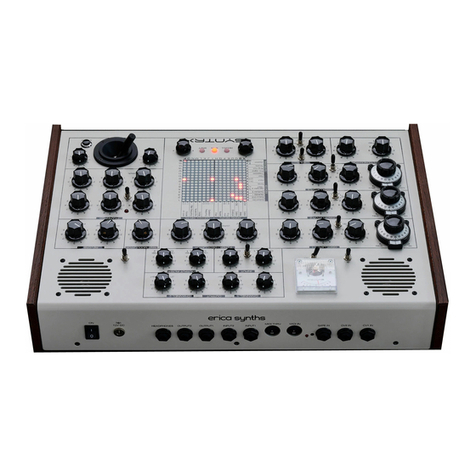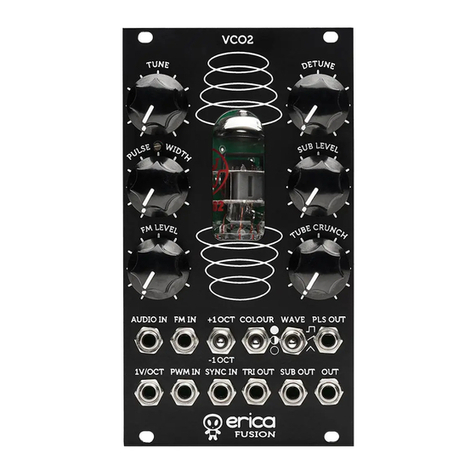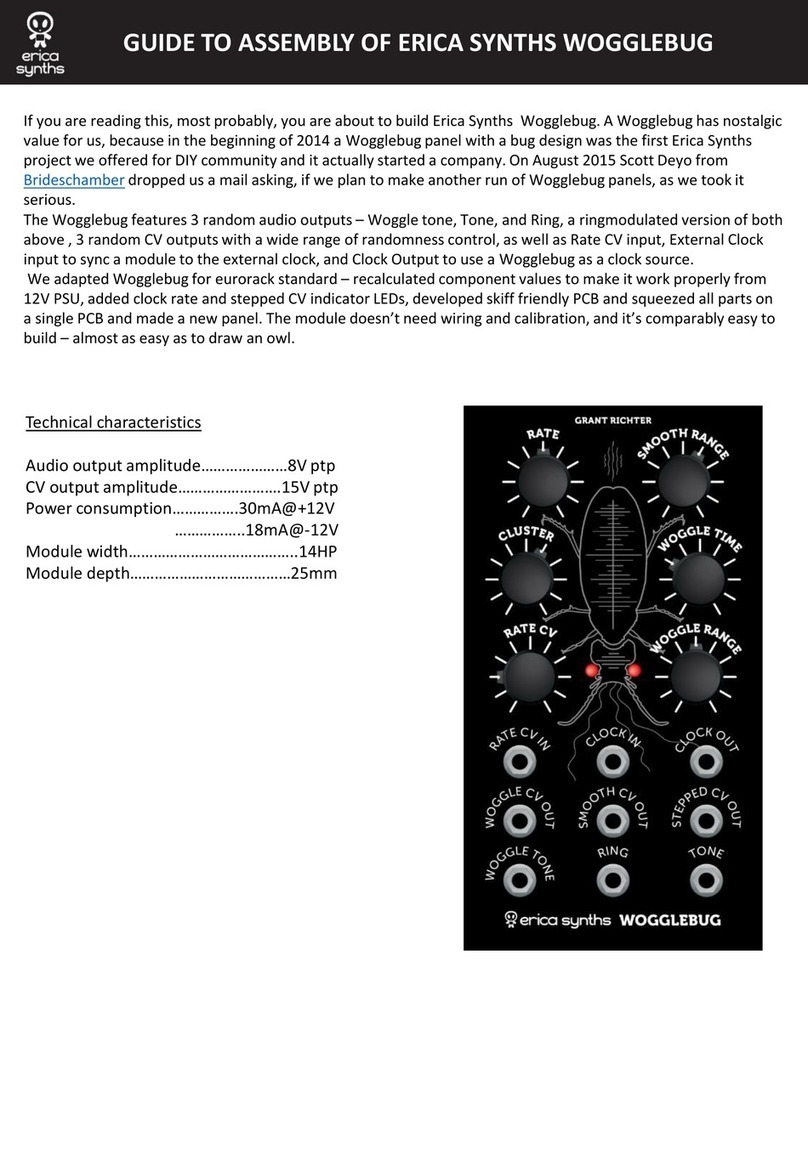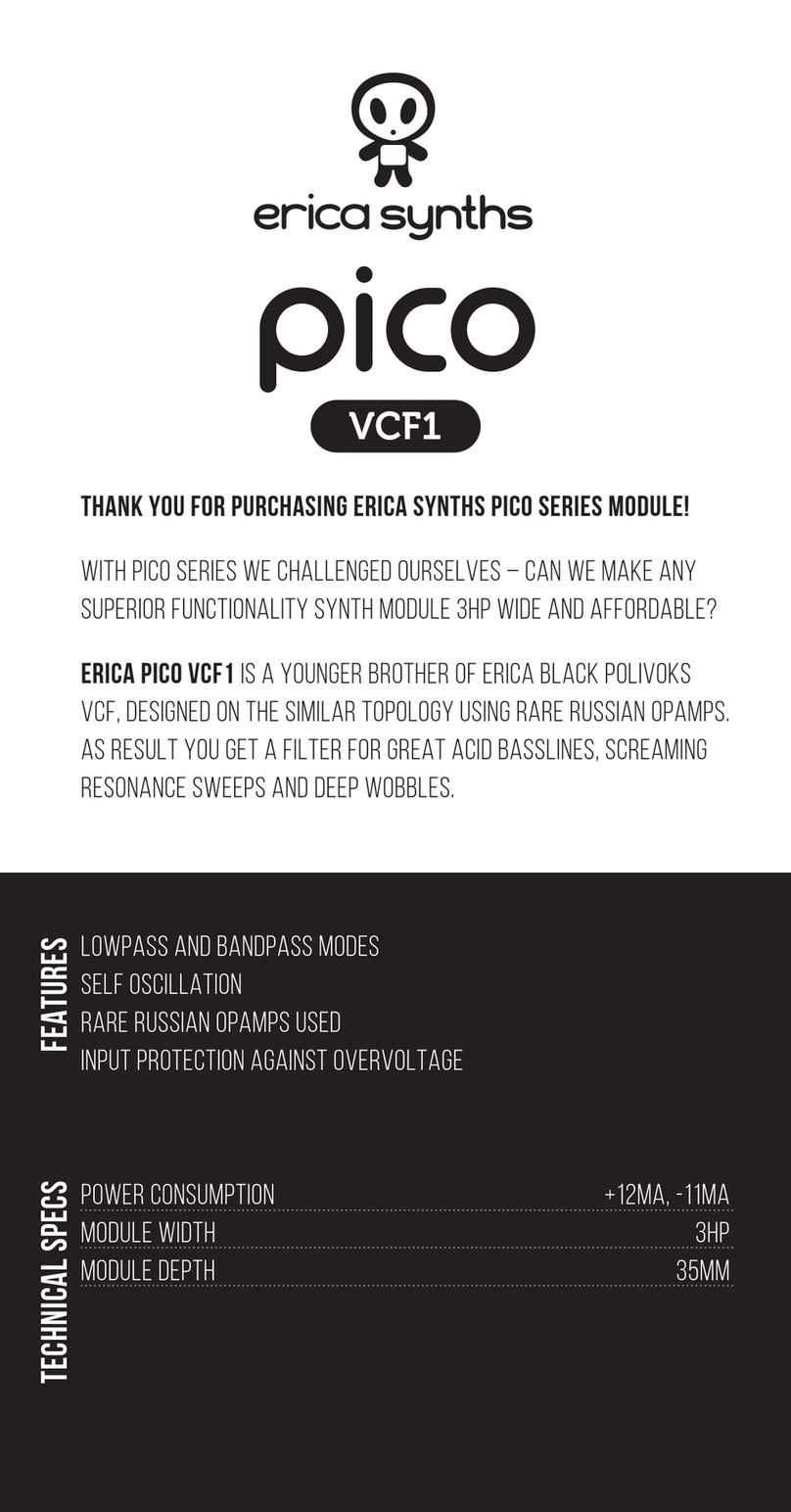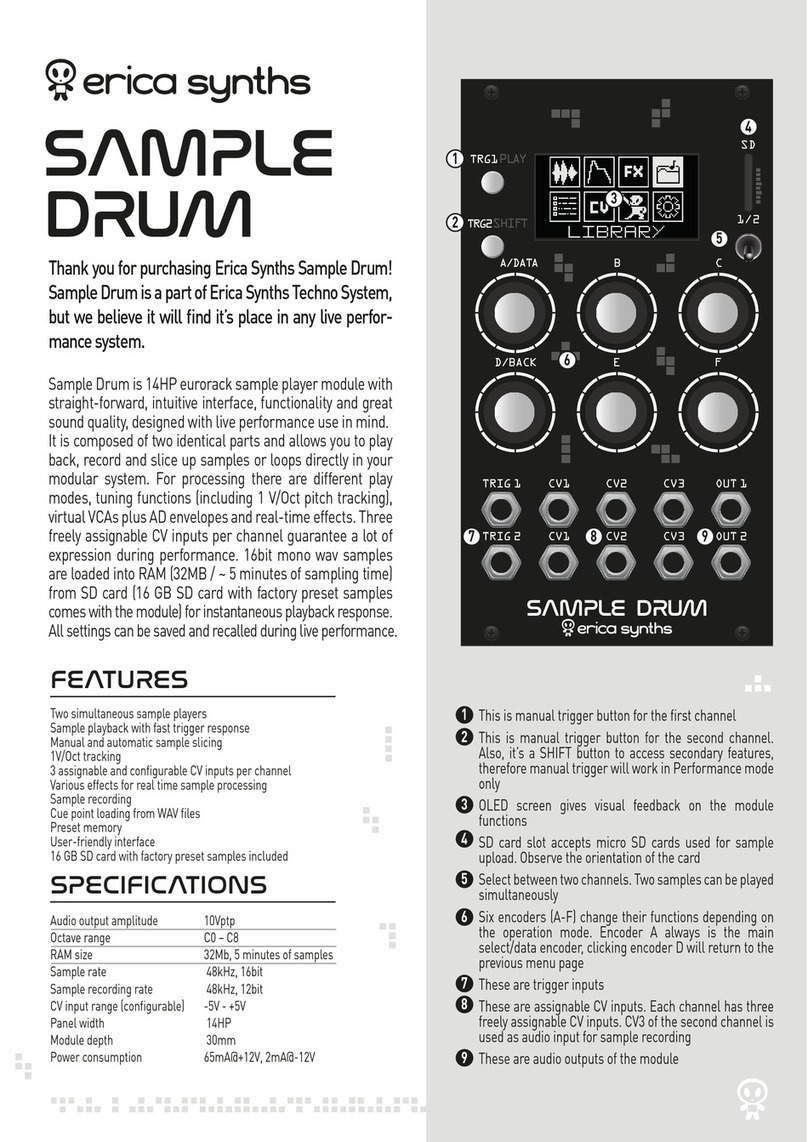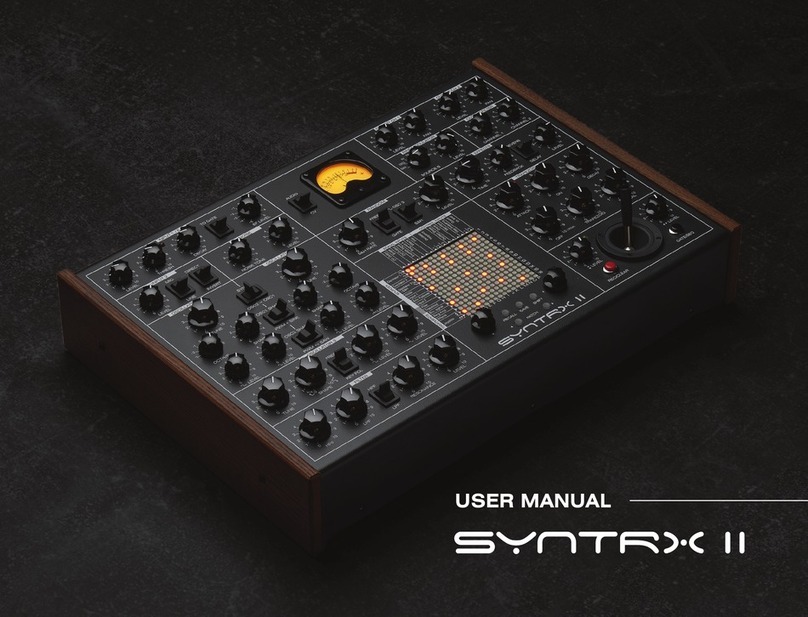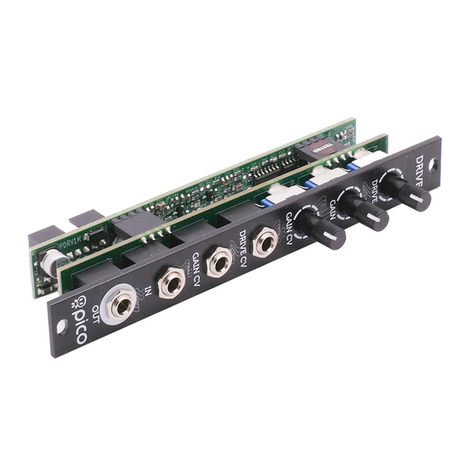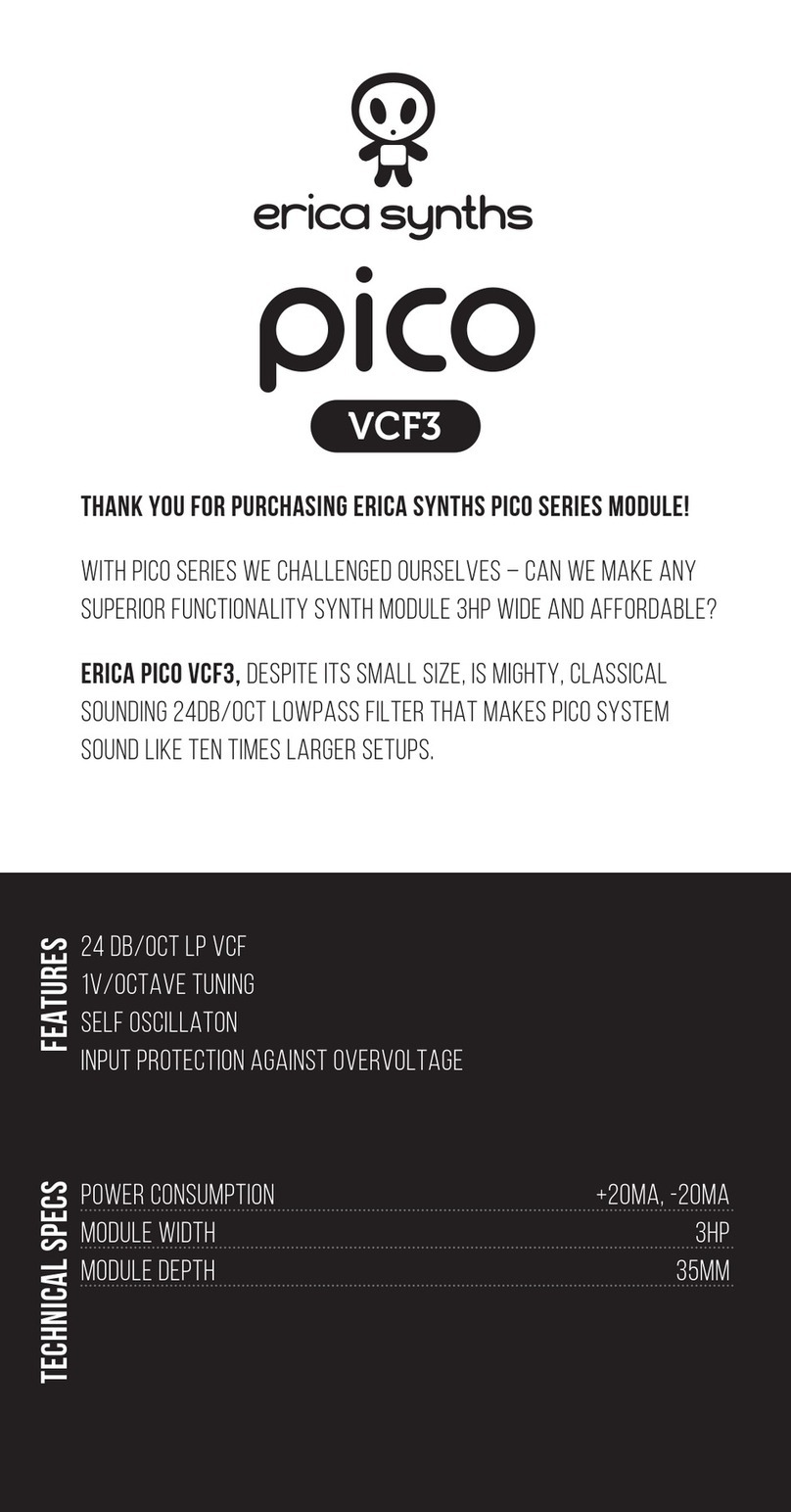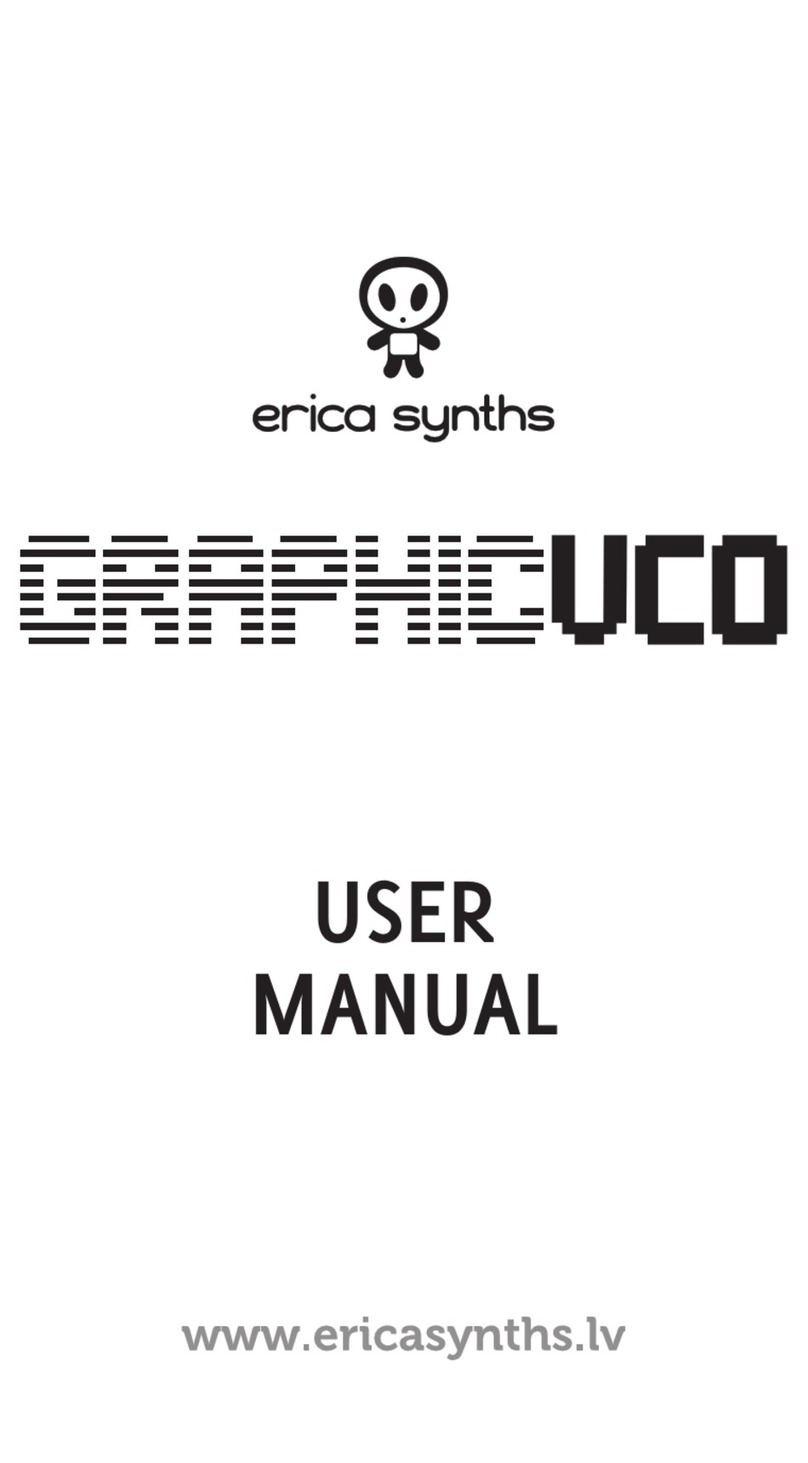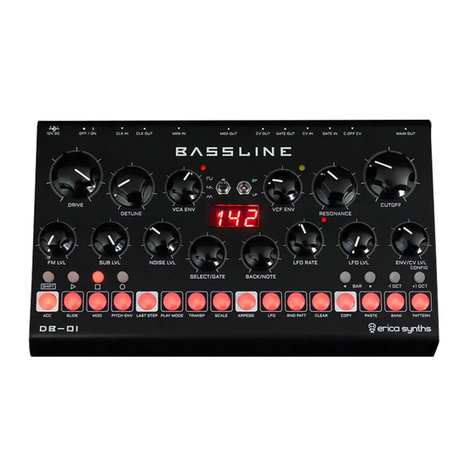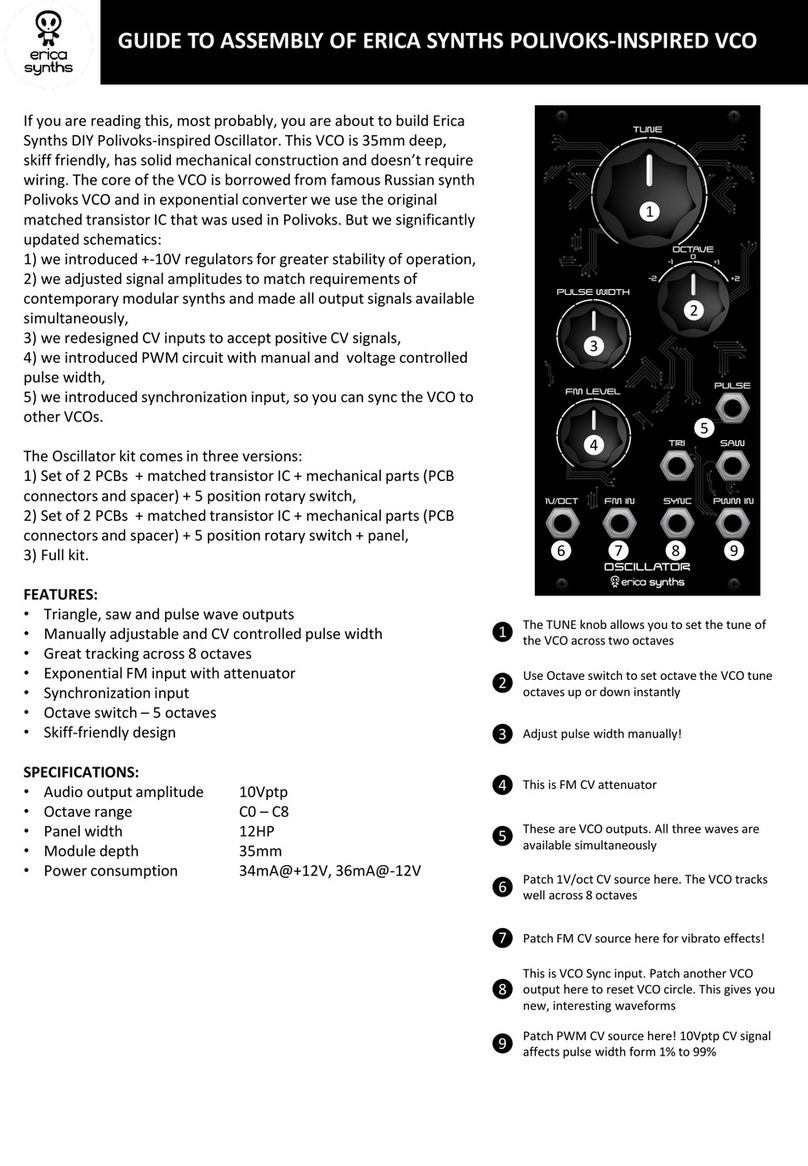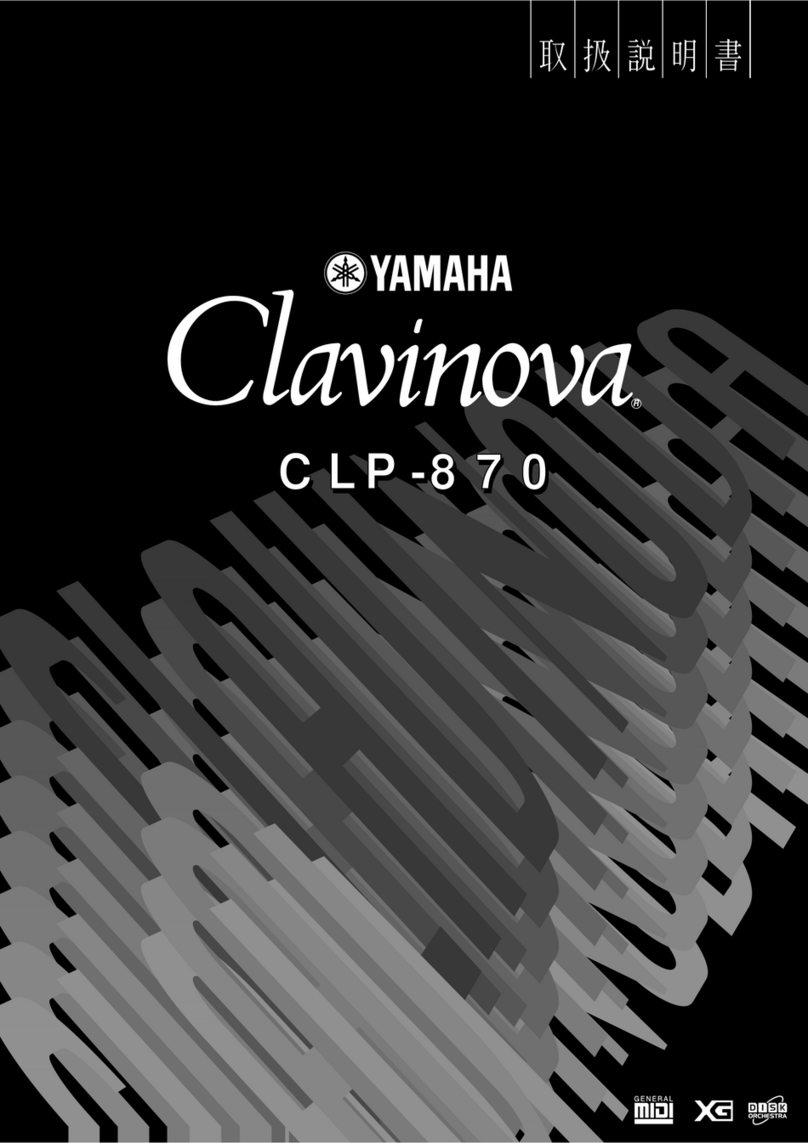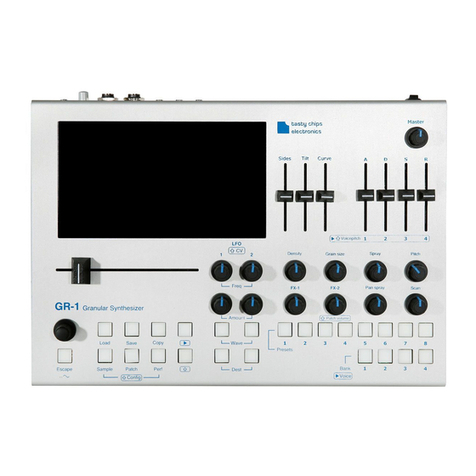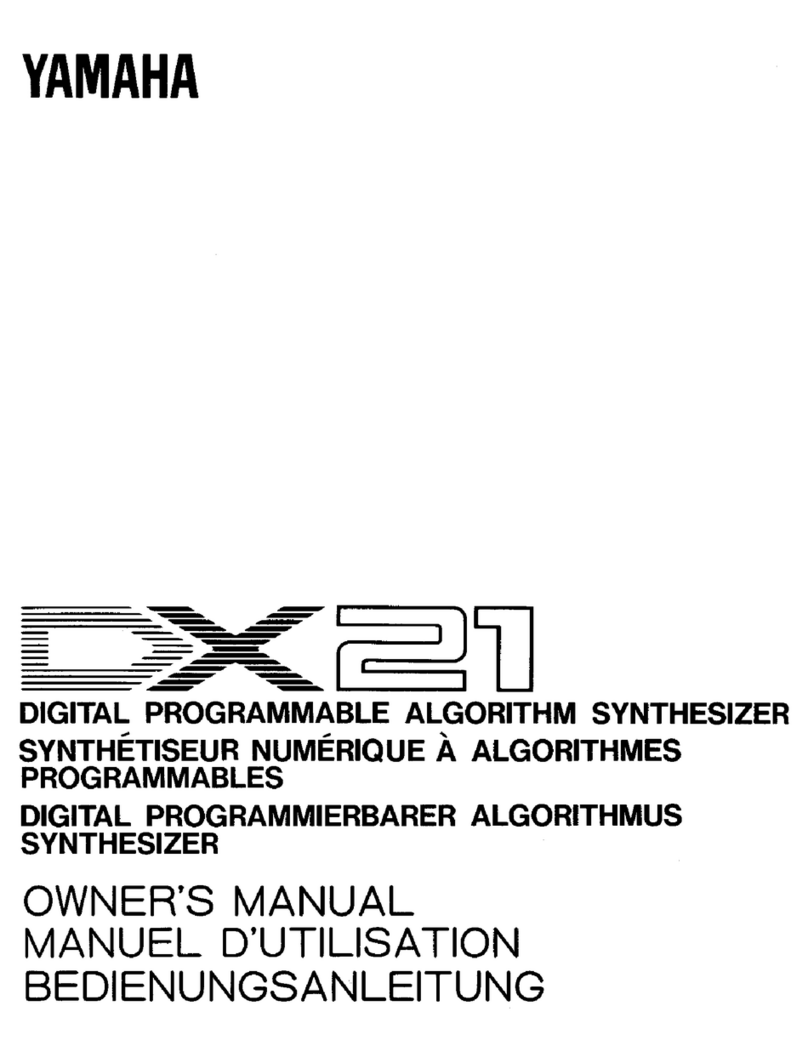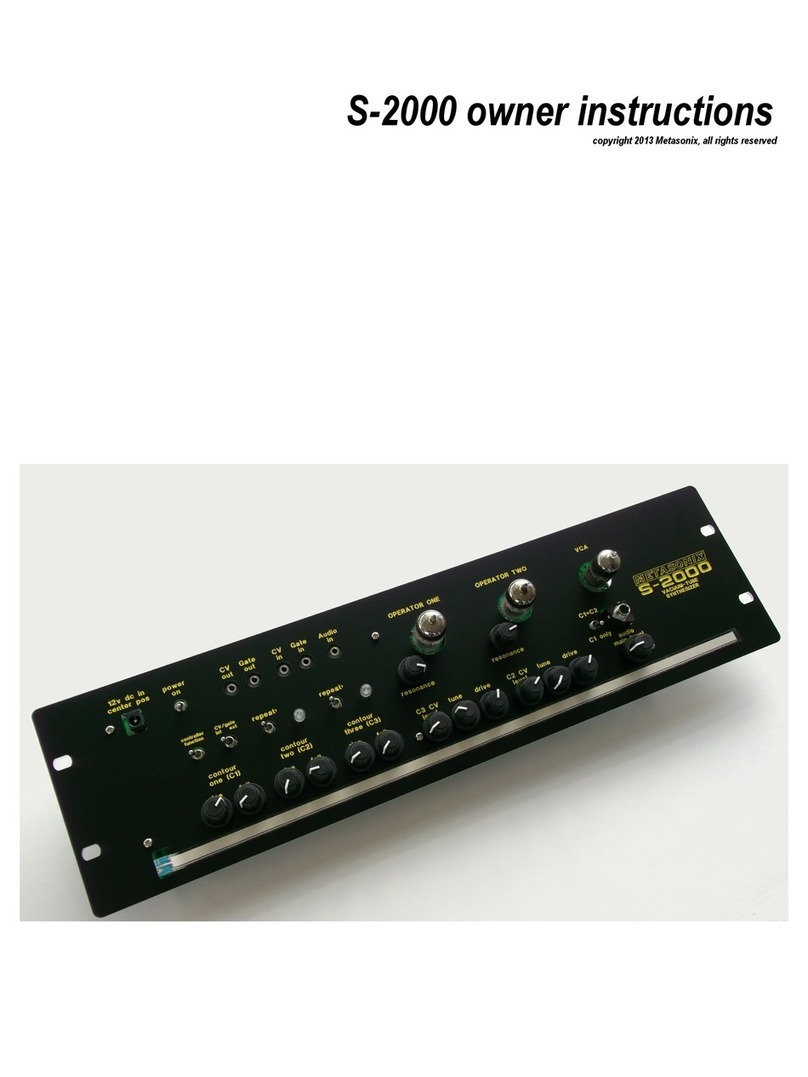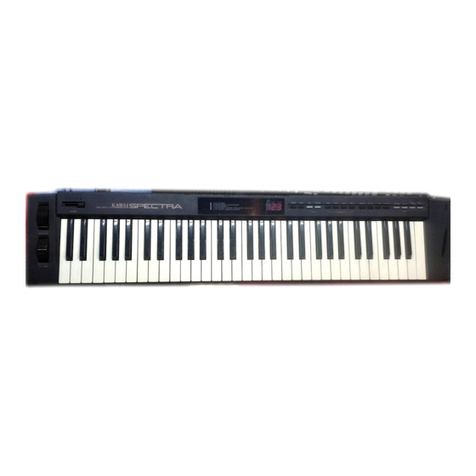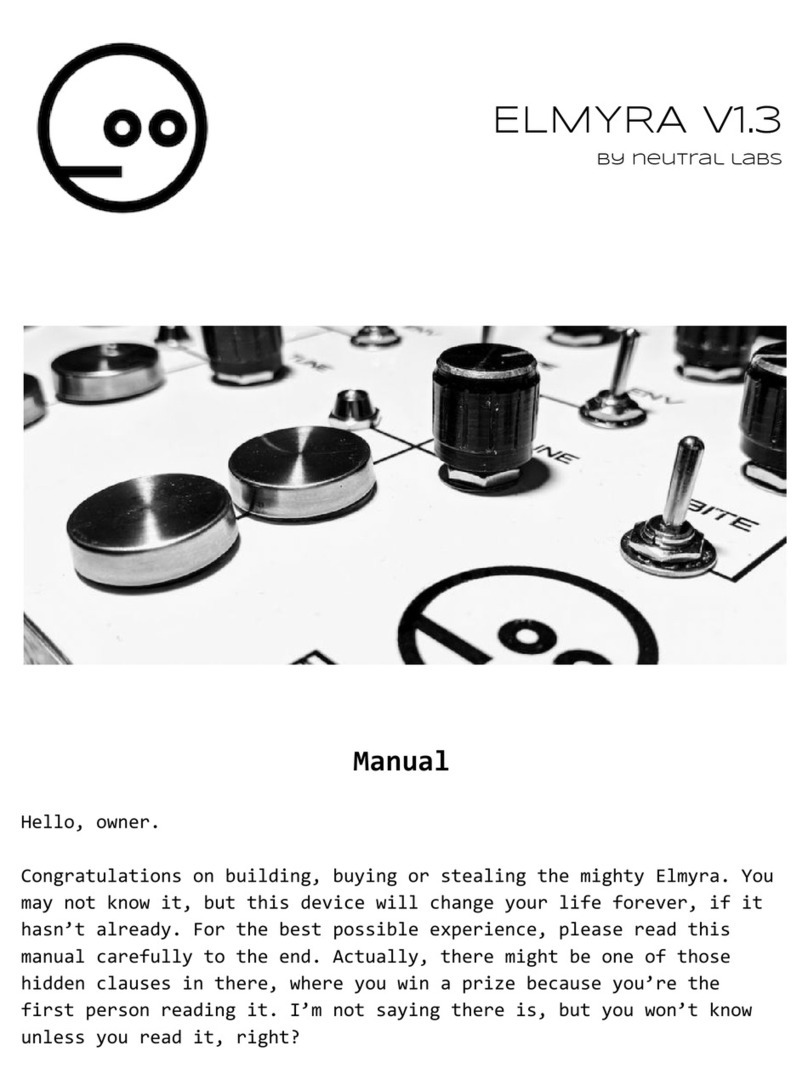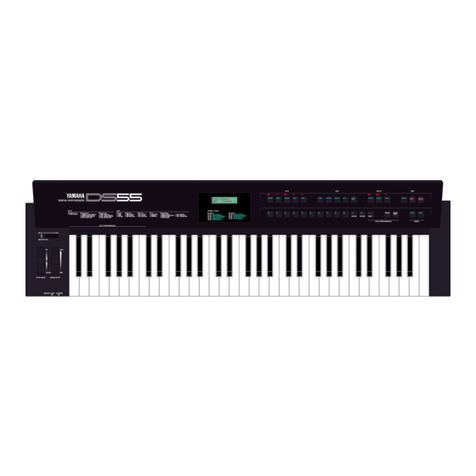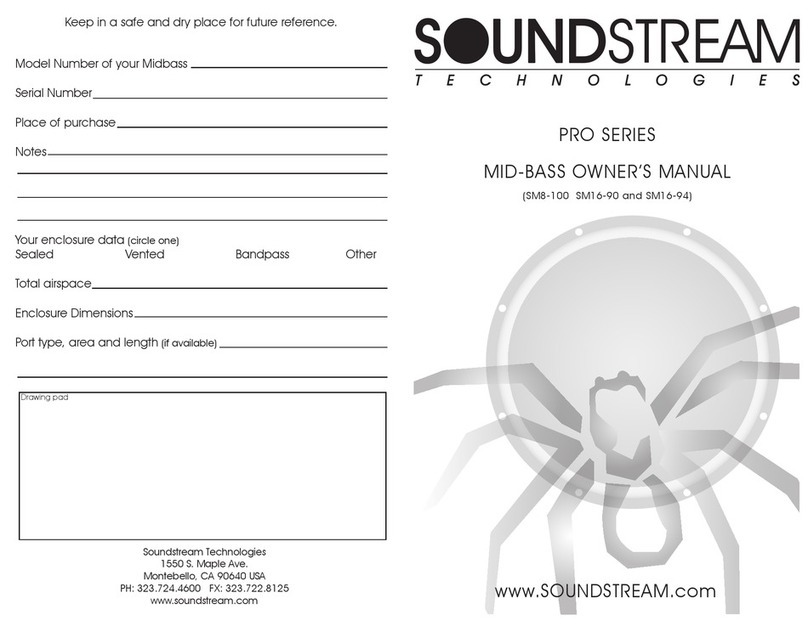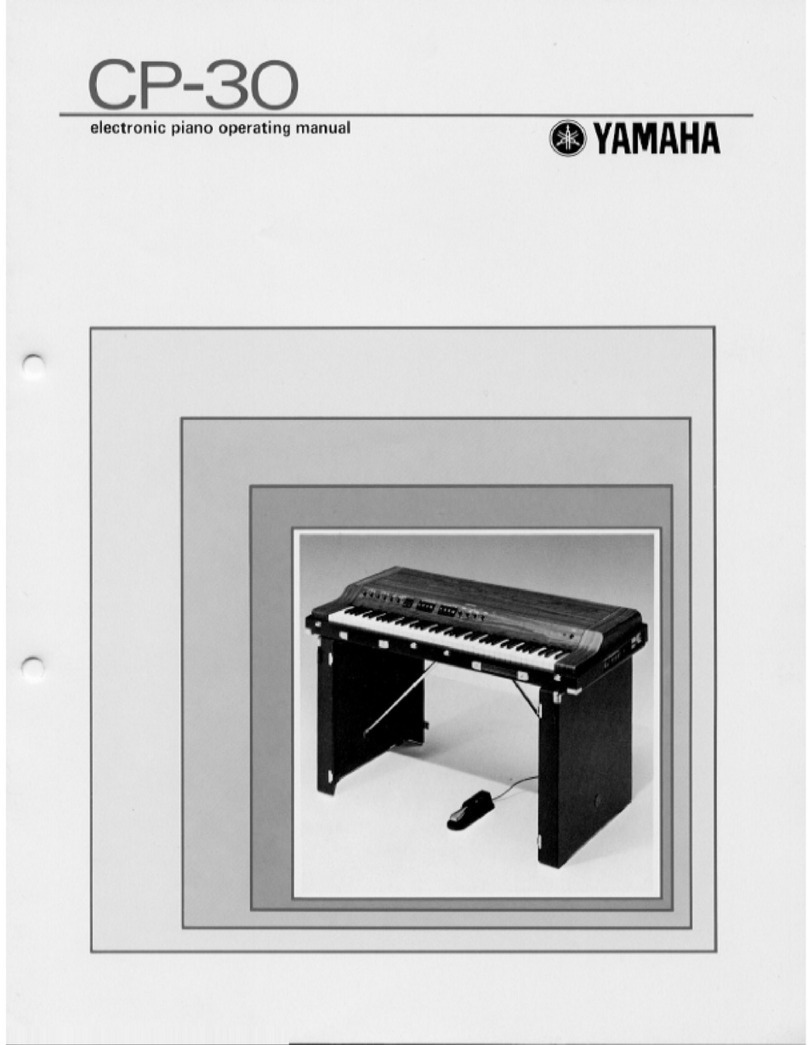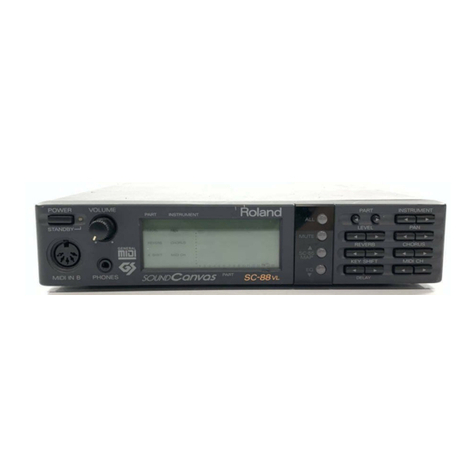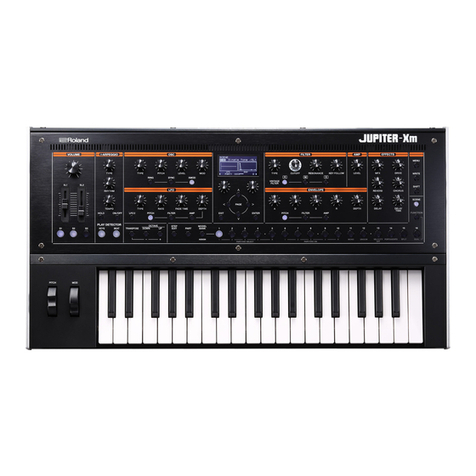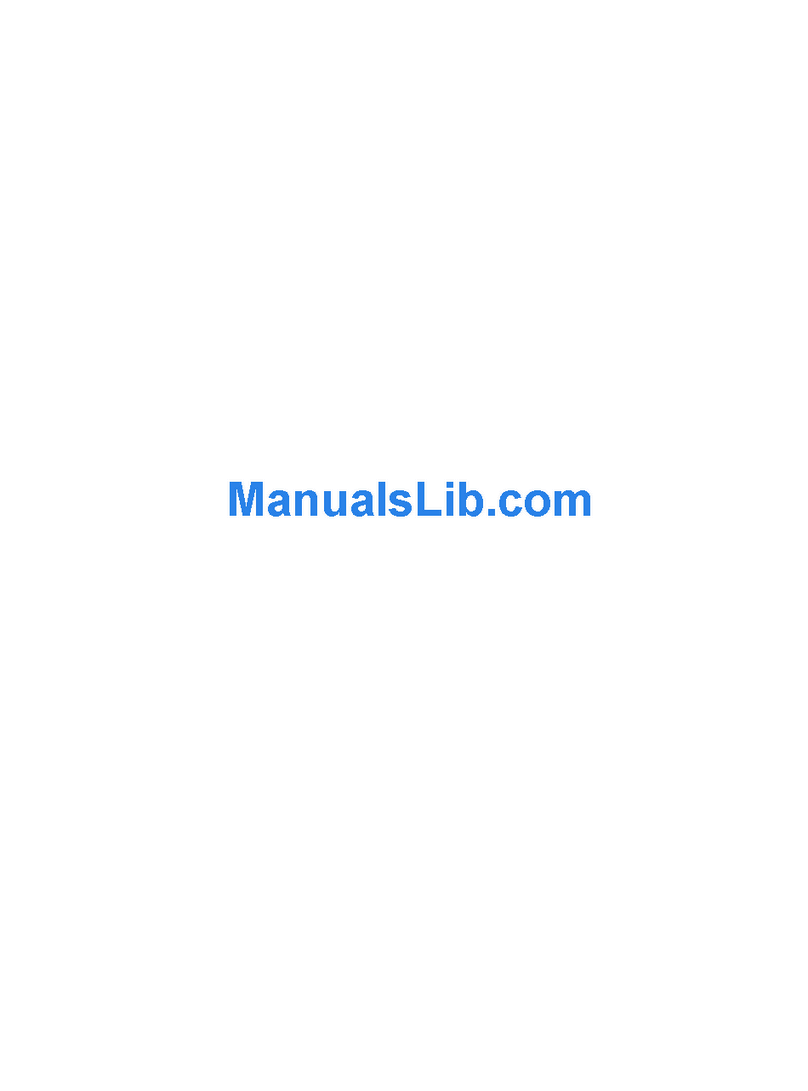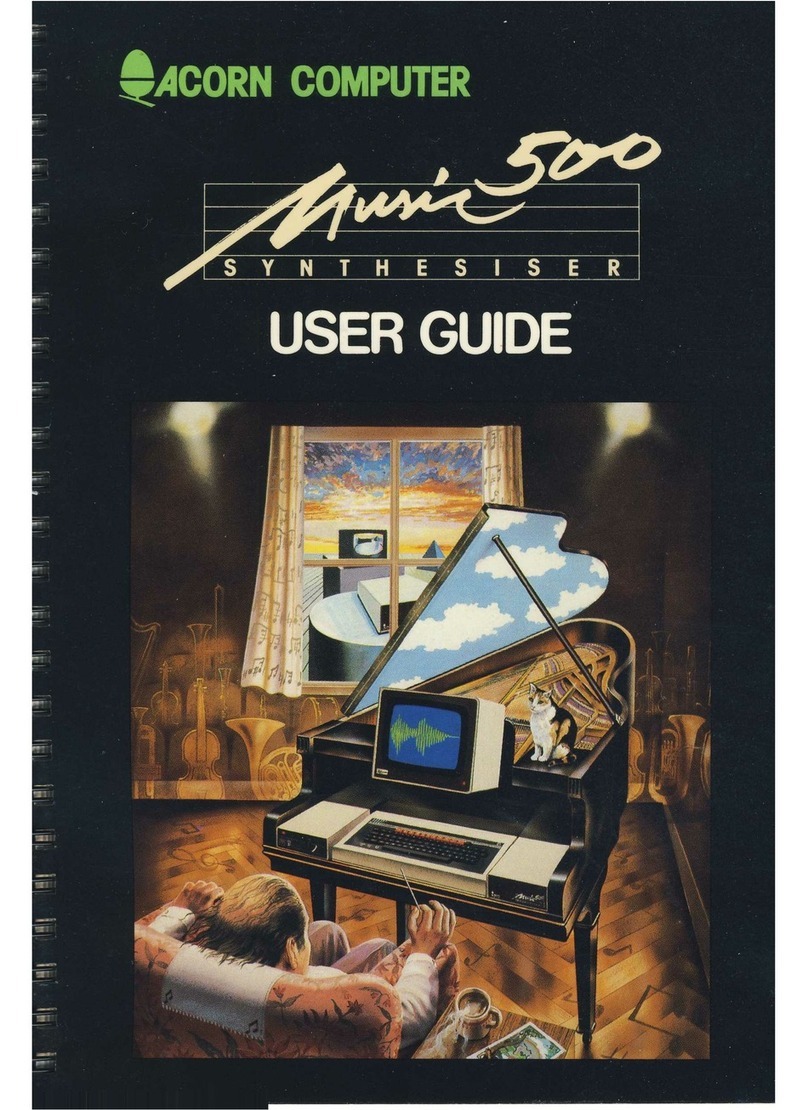
20
CV, GATE, MOD AND MIDI INPUT ROUTING
When signal is applied to the CV, GATE, MOD and/or MIDI
inputs, you can alter the sequence with an external signal
sources – keyboards, LFOs, wind or gesture controllers,
etc. The incoming signal can be assigned to a single output
or several outputs simultaneously.
Enter the SETUP menu and use the DATA encoder to
navigate to the INPUT configuration.
Rotate the DATA encoder to select the output (CV1-CV4 and
MOD1-MOD4) and configure it. The GATE is always passed
through to the selected channel.
Rotate the first step encoder to select the input source –
you can choose between MIDI and ANALOGUE (CV and GATE
inputs).
Rotate the second step encoder to select the action, when the signal is applied to the input. Available options are:
1) OFF – the relevant output will not be affected by the incoming CV or MIDI message;
2) FILL – when the incoming CV and GATE (or MIDI note on message) is applied, the notes in the sequence are
replaced by the incoming CV while the incoming GATE is high, and the GATE OUT is high while the incoming
GATE is high;
3) ADDFILL – the incoming signal is added to the notes in the sequence while the incoming GATE is high, and
the GATE OUT is high while the incoming GATE is high. Also, if there are paused steps (with a gate length
0) in the sequence, they are replaced with a high gate and the incoming CV;
4) ADD – the incoming CV is ADDED to the notes in the sequence, but the incoming GATE is ignored. The ADD
function is latched, so, even when you release a key on a MIDI or CV keyboard, the added CV value still is
present. This way you can transpose the sequence with external keyboard or you can even use one of the
sequencer tracks and patch it back into the module itself;
5) THROUGH – the incoming CV and GATE is passed directly to the relevant CV and GATE output, and the
sequence, running on this channel, is ignored. This is particularly nice feature for MIDI keyboard/
controller, because it turns the Black Sequencer into MIDI-CV converter. NB! The Black Sequencer acts as
monophonic MIDI-CV converter with the last note priority.
CV, GATE AND MODULATION RECORD
Instead of building sequences step by step manually, you
can record CVs, Gates and Modulations via external signal
sources – MIDI keyboards, CV/Gate keyboards or any other
CV/Gate sources. To do so, connect the MIDI keyboard to
MIDI IN socket or relevant CV/Gate keyboard outputs to
CV IN, Gate IN and MOD IN sockets and select the channel
(CH1-CH4) for recording. The sequencer can record only
one, selected channel at the time.
Now, push and hold the SETUP button and push the
RECORD button to enter the RECORD setup. Here you can
configure recording settings.
Roatate the DATA encoder to scroll the menu and use the
first step encoder to select a setting.
SOURCE – select between MIDI (MIDI IN) or ANALOGUE (CV IN, GATE IN, MOD IN) inputs.
MODE – select the record mode. Available options are OVERDUB, RECORD, INSERT and FILL – see a description
of modes below!
MOD REC – turn modulation recording ON or OFF. This is important feature, because, if modulation recording is
ON, the MOD output automatically switches to the SLIDED STEP MODULATION setting and you may loose your
modulation track, you designed previously.
NOTE QNT – engage or disengage note quantization to the selected QUANT scale for ther current track. When
this setting is ON, all recorded notes will be quantized to the selected QUANT scale.






















